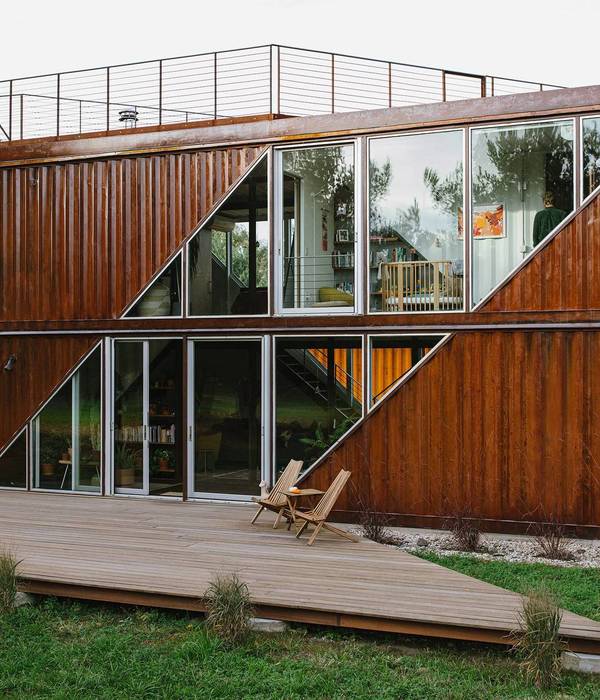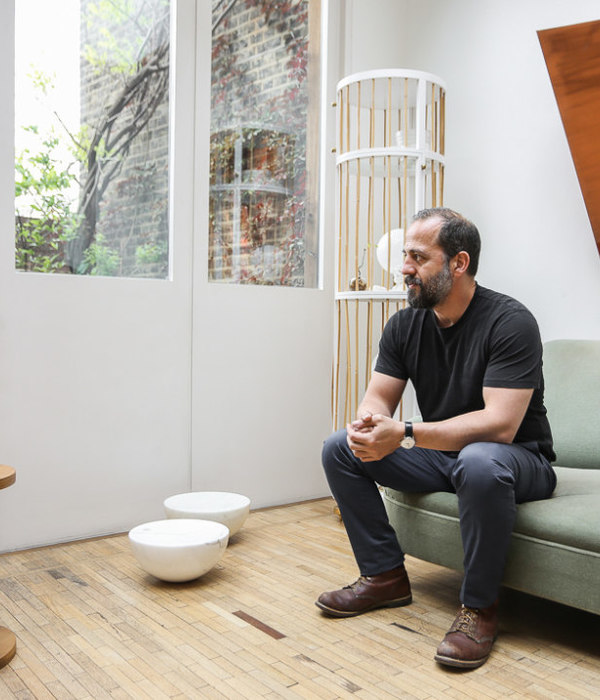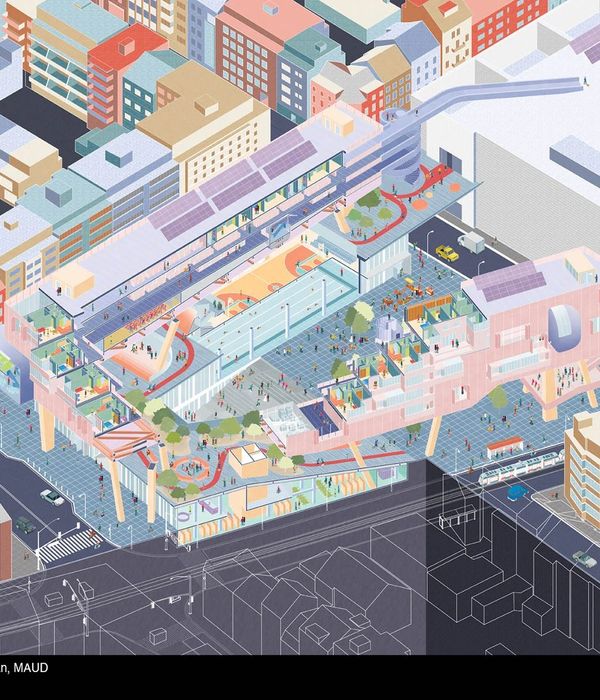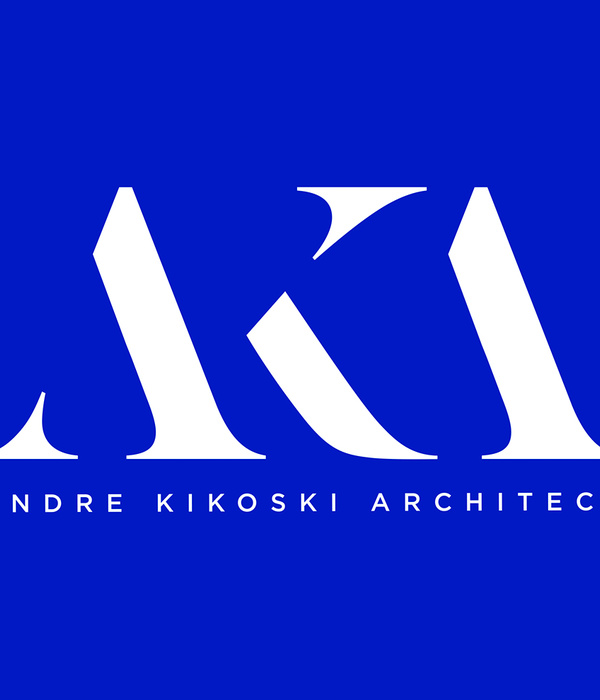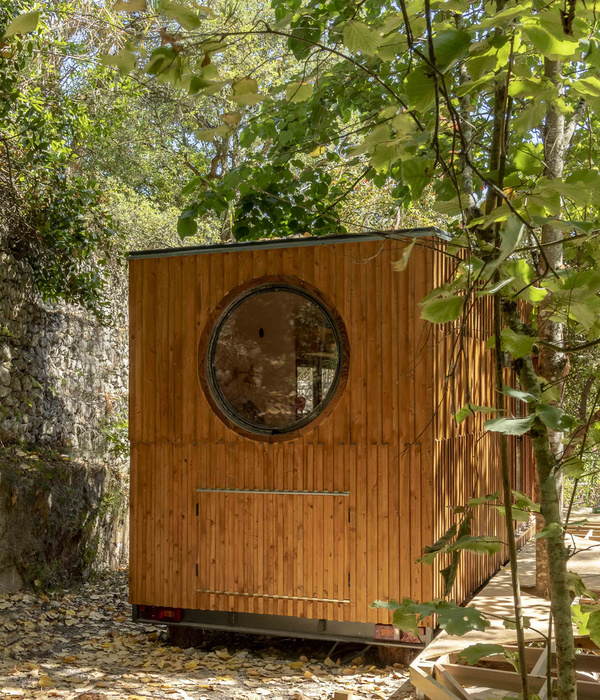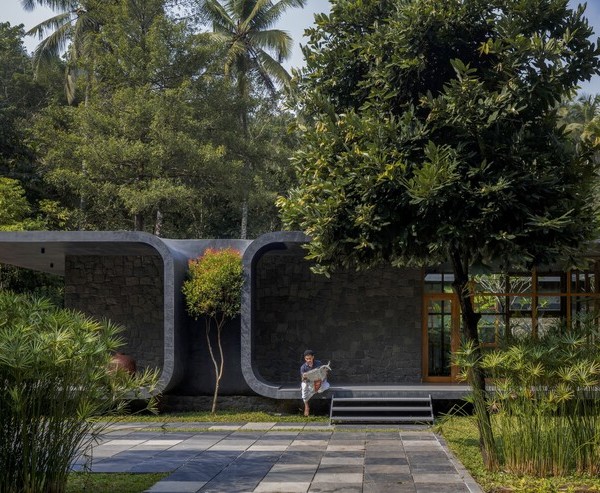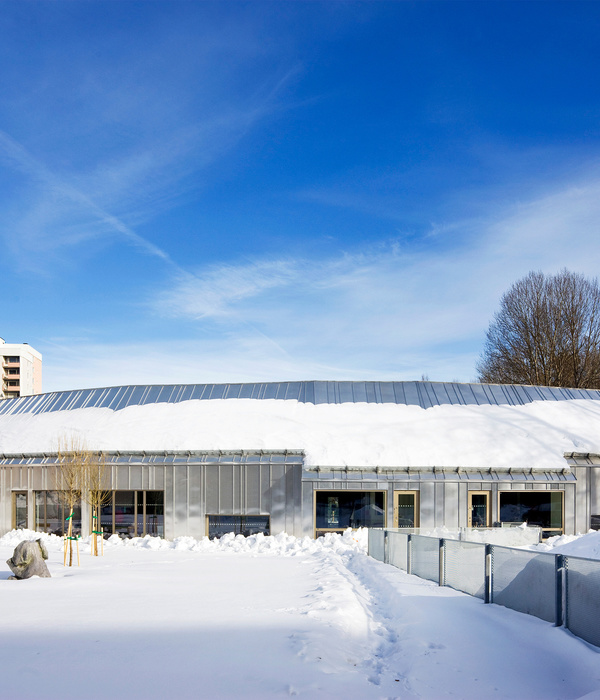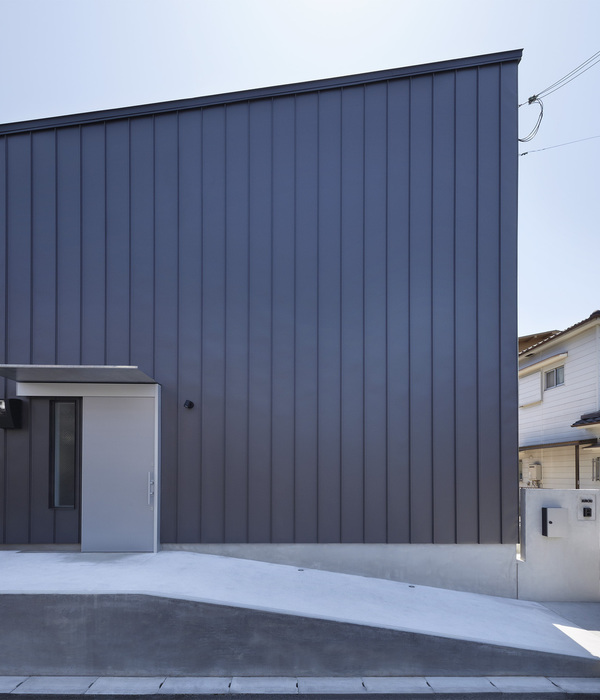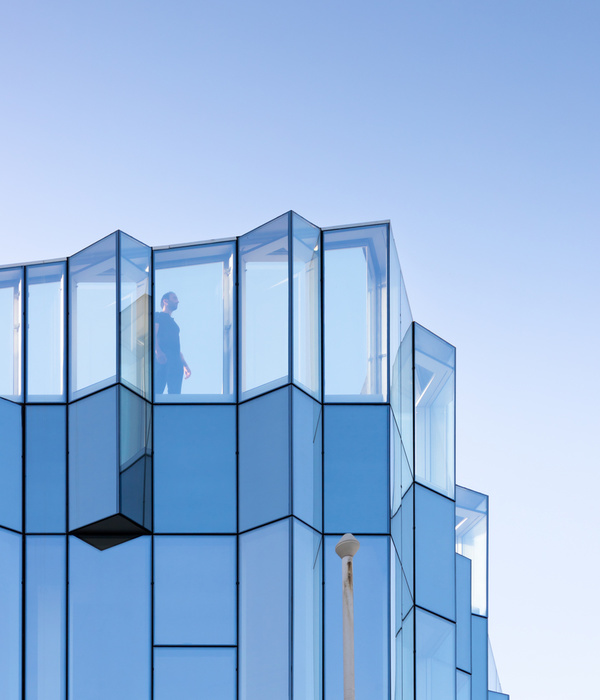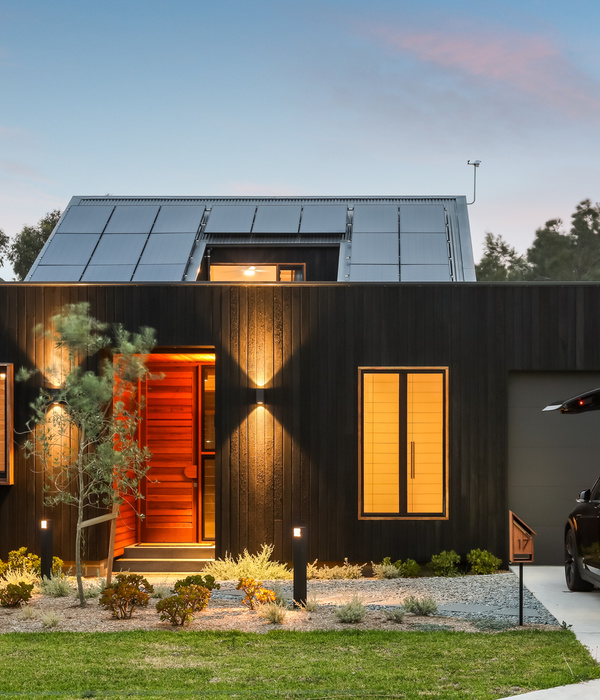在当下韩国的房地产消费趋势中,出现了一个新词“Young-kkel一代”,意思是指年轻人拼命从银行或家人那里借钱买自己的房子。“Yeong-kkel一代”代表了年轻一代担心由于房价急剧上涨而无法在未来购买自己的房子而产生的焦虑,而这种焦虑情绪还在愈演愈烈。
Among the new real estate consumption trends, there is the neologism called ‘Young-kkel Generation’ which means that young people borrow money from banks and their entire family members as much as possible desperately to buy their own house. ‘Yeong-kkel generation’ is an expression of anxiety created by young generation’s fear that they cannot buy their own houses in the future due to a sharp rise in house price. This situation is getting so serious.
▼项目概览, overall of the project © Jongoh Kim
在韩国,“建筑空间”如今仅被认为是“以商业利润为目的的房地产”。在机械化的商业概念中,“用于居住的建筑空间”几乎没有任何意义。随着激烈的社会竞争,这种机械化的社会趋势逐渐移植到城市空间中,创造出沉闷的城市景观。这就是为什么城市建筑在无声中变得更加枯燥与孤立的原因。
In South Korea, The ‘architectural space’ is recognized only as ‘real estate for commercial profit’ nowadays. In the concept of real estate, which is assessed by mechanical measurement, ‘architectural space for living’ has no meaning. As a result of competitive social climate, these kinds of social trends are naturally transplanted into urban space and creating dreary city’s landscape. This is why urban architecture became expressionless and isolated in the silence.
▼由街道看建筑, viewing the project from street level © Jongoh Kim
反观人们的记忆中传统村落,家家户户的院落围墙却营造出友好的邻里交流氛围。这种“限制性的围合界面”,如院落的矮墙,应该成为城市建筑的基本元素。然而,这种庭院空间几乎不可能出现在高密度的垂直城市之中。因此,Maaps Architects Cooperation事务所希望通过微型的阳台空间来重现村庄中的庭院和围墙元素。Tri_Poly塔楼即是一个关于重拾韩国传统生活方式与建筑特征的故事。
But, in the scenery of traditional villages where we played in our childhood, was shown and communicated through the wall of each house. This kind of ‘restricted interference’ like low walls surrounding the yard should be an essential element of urban architecture. However, in a vertical city, there can be no such yards. So, we just hope thin balconies of our building will serve that role as a yard and walls in the village. Tri_poly is the story of an architectural process to restore those lost features of our life.
▼沿街立面, facade along the street © Jongoh Kim
▼西北侧立面, north-west elevation © Jongoh Kim
本项目是一栋综合体塔楼,由三种不同建筑功能组成。 塔楼从下往上,分为别生活设施空间、商住两用公寓,以及多户型住宅。建筑师希望通过阳台这个统一的建筑元素将三个不同功能协调并整合在一起。但是,根据韩国现行法律规定,写字楼不能设置阳台。因此,建筑师利用独特的三角形结构创造出露台,巧妙地规避了写字楼不能设置阳台的法律规定,将三种功能合理地整合在同一栋建筑中。
▼分析图,diagram © Maaps Architects Cooperation
Tri_poly is a multi-purpose building which consists of three architectural functions together. Neighborhood living facilities, officetels (dual-purpose buildings used for commercial and residential purposes in Korea) and multi-household houses are stacked from below. We have conceived a concept that harmonizes three functions through a common element: the balcony. However, under the current law, balconies cannot be installed in officetels. Tri_poly is the result of the idea of a solution to installation of terraces at officetels complying with the current law using its unique triangular structure and linking three functions and programs into one architecture.
▼独特的三角形结构创造出露台, unique triangular structure forming balconies © Jongoh Kim
▼立面细部, details of the facade © Jongoh Kim
“Tri_poly”是指通过三角形结构的重复连接而形成的空间系统。 垂直的“之”字形结构在立面上形成了一系列三角形的缝隙空间。这些缝隙空间不仅为创造阳台提供了可能,同时也成为承重结构以及窗户设计的重要参考依据。“Tri_poly”空间系统形成的缝隙起到了将室内空间暴露于室外的作用,进而为人们提供了一个缓解压力的休息场所。
Tri_poly means a spatial system connected through the repetition of a triangular structure. The vertical zig-zag patterns create triangle slits on its facades. These triangular cracks make room for balconies. The triangular structure also has become a reference line for design that supports loads and windows. As a result, the slits which Tri_poly create play a role in exposing the interior space to the outside and offer a resting place where people can relieve stress.
▼三角形的缝隙空间增加了立面的开窗面积, The triangular gap space increases the window area of the facade © Jongoh Kim
▼侧立面细部, detail of the side facade © Jongoh Kim
丰富的开窗形式,将每个独立的室内空间与外部环境相连。 独特的体量提高了垂直建筑景观的开放程度,增加了两个甚至三个方向上的开窗,向外界展示出人们的各种生活方式,为城市景观增添了活力。
Tri_poly provides various types of the window where each individual space meet the outside. The vertical architectural landscape opened on two or three sides offer vitality to the urban landscape by revealing the people’s various life styles to the outside.
▼屋顶露台,roof top terrace © Jongoh Kim
▼由屋顶露台看周围城市景观, viewing the surrounding environment from the roof top © Jongoh Kim
创造各种开窗与露台的目的,除了为每个独立的室内空间引入充足的自然光线与理想的景观视野之外,更重要的是将露台空间与窗户以多角度的形式向外界打开。通过稍稍削弱空间独立性的方式,增强人们之间的互动与交流,透露并分享他们之间的故事。这种设计手法为建筑的立面赋予了戏剧性,使人们的日常生活场景成为城市景观的一部分。
The purpose of creating various windows and terraces may be to add abundant light and scenery to individual spaces, but the main design intention is to allow windows and terraces opened on multi-side to interfere in people’s privacy a little bit. Rather than the independence of privacy, we intend people to communicate through some interference and also reveal their stories through ‘these kinds of interference’. Through this, the scenery that we want to create is the urban landscape where the drama of our lives flows onto the facades of Tri_poly.
▼室内概览,overall of the interior © Jongoh Kim
▼多种户型的住宅,various types of apartment © Jongoh Kim
▼大面积多朝向的开窗与阳台空间,Large area of multi-oriented window and balcony space © Jongoh Kim
▼一层平面图,1st floor plan © Maaps Architects Cooperation
▼三层平面图,3rd floor plan © Maaps Architects Cooperation
▼八层平面图,8th floor plan © Maaps Architects Cooperation
▼十五层平面图,15th floor plan © Maaps Architects Cooperation
▼立面图与剖面图,sections and elevation © Maaps Architects Cooperation
▼立面与剖面细部详图,detail drawings © Maaps Architects Cooperation
▼项目更多图片
{{item.text_origin}}

